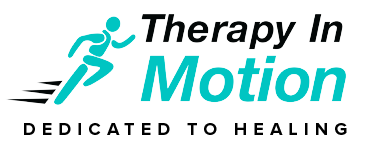Benefits of Physical Therapy for Weakness and Aging
Apr 25Adam Lever, PT, DPT, ATC 2016 Orthopedic Resident at Mechanicsburg Center
 By world standards, the United States is a relatively young nation. But our elderly population is growing rapidly.
By world standards, the United States is a relatively young nation. But our elderly population is growing rapidly.
The number of Americans age 65 and older will almost double between 2012 and 2050, according to the U.S. Census Bureau.
Why is this happening? Because we have better access to medical care, improved sanitation and nutrition, and greater availability of health and wellness information. With this trend, there has been a significant impact on health care, including: increased long-term facility care, increased use of Medicare insurance, injuries in the well-elderly, and a demand for preventative medicine to decrease the effects of aging.
Aging can be defined as the process of growing older and can also be defined by the physiological changes that occur in the body. There are three categories of the elderly: young-old (ages 65-74), the middle-old (ages 75-84), and the old-old (age over 85).2
Musculoskeletal Changes
Normal musculoskeletal changes as one ages involve connective tissue structures, cartilage, bone, muscle and discs in the spine. These changes can lead to changes in function including general joint stiffness; increased compression of joints; increased fracture risks; postural changes; increased muscle fatigue; decreased muscle endurance; and decreased muscle mass. If not controlled these changes can lead to osteoporosis, fractures, arthritis and posture dysfunction.
Cardiopulmonary Changes
Normal cardiac changes in the aging body include increased stiffness of the heart wall, thickening of valves of the heart and increased thickness with decreased diameter of blood vessels. These changes lead to a decrease in maximal heart rate, increased resting blood pressure, quick drops in blood pressure when standing, and decreased maximal endurance of the heart muscles.
Changes in respiration muscles, airway, lung tissue and chest wall are normal, resulting from increased work of breathing. Functional implications of these changes include increased fatigue with increased levels of work. If these changes become uncontrolled, high blood pressure, coronary artery disease, peripheral vascular disease, chronic obstructive pulmonary disease (COPD), pneumonia and lung cancer could develop.
Neuromuscular Changes
As we age, the speed of our nerves sending messages to the muscles gets slower. As a result, reaction time slows down and muscles don’t fire in sync. This can lead to complaints of unsteadiness and other balance issues.
Exercise Prescription
Although the changes described above are normal parts of aging, they can be slowed by weekly exercises that target these systems and negative consequences can be avoided.
According to the American College of Sports Medicine, individuals over the age of 65 should perform moderate-intensity aerobic exercise 30 minutes per day, five days per week, or vigorous-intensity aerobic exercise 20 minutes per day, three days per week.
Moderate-intensity exercises include brisk walking, dancing, gardening and housework, whereas vigorous-intensity activities include running, walking briskly up a hill, fast cycling, fast swimming and participating in competitive sports.
• Eight to 10 strength-training exercises should be performed two to three times per week, 10 to 15 repetitions each.
• Flexibility exercises should be performed two days per week.
• Strength and flexibility exercises should target large muscle groups such as the chest, shoulders, arms, back, abdomen and legs.
• If an elderly individual is at risk for falling, balance exercises should be incorporated.
Physical therapy can assist in the recovery of age-related injuries and also as a preventative measure before injuries occur. Physical therapists are specifically trained to develop exercises throughout the lifespan. A physical therapist can assist individuals in starting or returning to a safe exercise routine to assist with maximizing one’s function.
